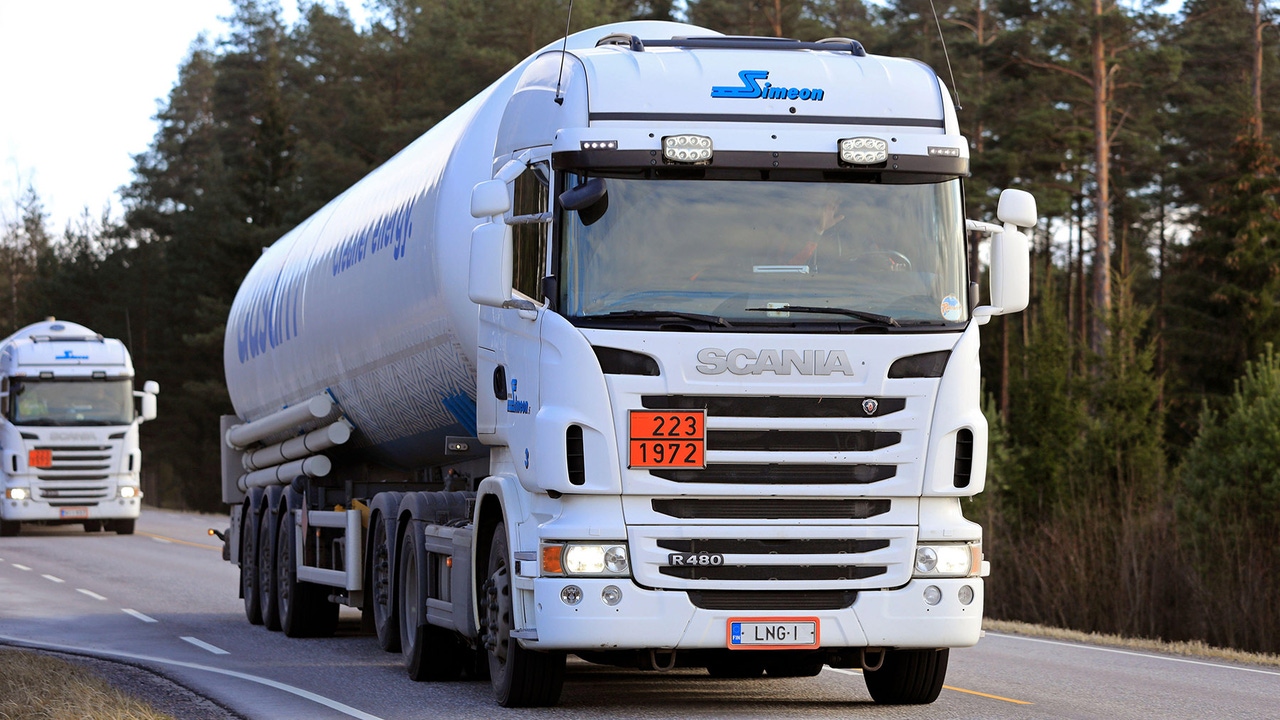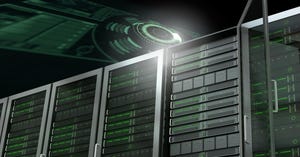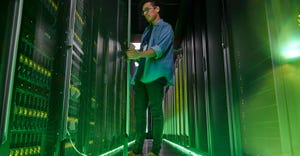How Trailer-Mounted Power Generation Could Help the Data Center Energy Problem
Is your data center lacking power? Truck it in.
June 10, 2024

As data centers face escalating power demands, trailer-mounted power generators are emerging as a potential solution. These mobile units can be positioned in parking lots, providing critical power to facilities struggling with internal and external power limitations.
Internally, the power requirements of processors in densely packed racks have surpassed the electrical capacity of many data centers. Externally, power shortages in metropolitan areas and prolonged timelines for new power generation projects exacerbate the issue.
Given the ongoing power issues impacting the data center and digital infrastructure sector, delegates at this year’s Data Center World conference learned how trailer-mounted solutions may become a more prevalent means of providing immediate and scalable power.
The Need for Power
Power availability is one bottleneck that threatens to throttle the data center AI revolution. Data centers are getting squeezed internally and externally on the power front.
On the operational front, the amount of power required by processors in ever-denser racks has exceeded the available electrical capacity of many data centers.
“Processors consume 4.6 times more power today than they did in 2000, and they continue to get larger and hotter,” said Shen Wang, principal analyst at Omdia, during this year’s Data Center World conference.
Externally, metro areas and even entire geographic regions are starved for power. Even where there is a willingness to bring on more grid capacity, timelines work against data center expansion. It can take many years for new projects to move through planning, approval, permitting, and construction.
“There isn’t the 20 to 40 GW sitting around that major markets need, waiting for AI to say, ‘Give me a contract,’” said Brian Pryor, managing director of investment banking firm Houlihan Lokey.
Renting Power Generation Trailers
Some data centers can fund their own power generation assets. A few possess the ability to build a dedicated power plant or microgrid on campus or adjacent to the data center. That may lie beyond the financial capabilities of many facilities, however.
One alternative gaining momentum is to rent or buy a trailer-mounted power generator that can sit in the parking lot. Companies like GE Vernona, Siemens Energy, Mitsubishi Aero Power, Solar Turbines, APR Energy, Dynamis Power Solutions, and Relevant Power supply mobile gas turbine or gas engine packages that can be towed onsite. Some provide a couple of megawatts and others can go as high as almost 50 megawatts. But that assumes a nearby supply of natural gas.
Some cities and states are making it difficult to add new pipelines to bring natural gas to where it is needed. Sam Thigpen, CEO of Sapphire Gas Solutions, has a solution: truck in the power in the form of liquefied natural gas (LNG). This, he says, can “assure a supply of natural gas as reliable as a pipeline.”
Trailers vs. Microgrids
Trailer-mounted power generators are typically a temporary solution, but many operate for several years. Some data centers may bring in a power trailer to tide them over until they obtain power elsewhere. They may have to wait until the local utility can supply more energy, until a new wind or solar farm comes online, or they establish their own power plant onsite.
Alternatively, some data centers might be working to become part of a microgrid or private grid where power assets are shared amongst several organizations separately from the main grid. Until a microgrid is established, trailer-mounted power can fill the gap.
LNG Power Generators for Data Centers
The US has a well-established supply and distribution network for compressed natural gas (CNG) and LNG. As LNG is a liquid, it is far denser than CNG and is used for larger installations. However, it requires cooling to very low temperatures for transportation.
“LNG is natural gas that has been cooled to about -260°F for shipping and storage,” said Thigpen. “The volume of natural gas in its liquid state is about 600 times smaller than its volume in its gaseous state in a natural gas pipeline.”
This liquefaction process makes it possible to transport natural gas to places pipelines do not reach. About 17.7 trillion cubic feet (BCF) of LNG is traded every year. The US is now the largest supplier, sending it mainly to European and Asian markets.
While the LNG export business is thriving, a growing amount of LNG is consumed internally for use cases such as transportation and onsite power. Thigpen considers the trucking of LNG to be like a virtual pipeline for natural gas. His company has delivered 3 BCF by truck around North America. That is about the equivalent of the amount of natural gas the US consumes in a day currently. One trailer can provide up to 500 million BTUs of LNG to a site. That’s enough to keep a power-hungry data center running for some time. As the supply runs out, another truckload arrives to top up the storage vessel that feeds the power trailer.
Sapphire has multiple data center customers. Some use the LNG solely for backup power in the case of grid interruptions and outages.
“Some customers are off-grid and cannot contract grid power,” said Thigpen. “We can provide them with 5 to 100 MW to serve continuous needs.”
There are others who only need LNG to be trucked in over the short term. Perhaps grid power will be available in a few months. LNG supply fills the gap until a new connection comes online.
Flexible Power Solutions
The US has vast natural gas resources in places like Texas, New Mexico, and Pennsylvania – and the delivery network is expanding. Anywhere natural gas is produced or stored is a potential resource, and many metropolitan areas are expanding their natural gas supply.
Data center managers may not be keen to store LNG onsite. But there is a parallel – many have been storing diesel for years for use in backup generators.
“LNG stored onsite does not require fuel polishing like diesel,” said Thigpen. “LNG reduces emissions by about 30% compared to diesel as fuel for backup, temporary or long-term power generation. Its total delivered price can save 30% to 50% compared to diesel.”
For data centers facing escalating power demands, trailer-mounted power generation may present a viable, scalable solution. While these systems can temporarily bridge the gap until more permanent infrastructure is in place, they also offer some advantages over traditional diesel generators, including lower emissions and potential cost savings.
As the digital infrastructure sector continues to evolve, flexible power solutions like trailer-mounted generators may become increasingly important when it comes to meeting continuous and growing energy needs.
About the Author
You May Also Like


.jpg?width=300&auto=webp&quality=80&disable=upscale)



.jpg?width=300&auto=webp&quality=80&disable=upscale)


